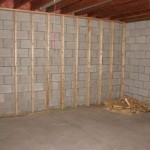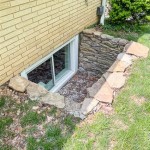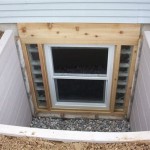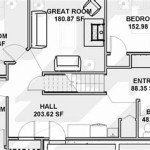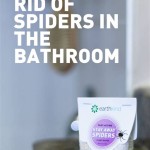How To Carpet a Cement Basement Floor: A Comprehensive Guide
Carpeting a cement basement floor offers a significant improvement in comfort, warmth, and overall usability of the space. Unfinished cement can be cold, damp, and uninviting. Carpeting mitigates these issues, transforming the basement into a more livable area. However, proper preparation and installation are crucial to prevent moisture problems, mold growth, and premature carpet degradation. This article provides a detailed, step-by-step guide on how to properly install carpet over a cement basement floor.
Essential Preparation and Assessment
Before commencing any carpeting work, the critical first step involves a thorough assessment of the basement floor's condition. This assessment determines the necessary preparatory steps and ensures the long-term success of the carpet installation. Key aspects include identifying and addressing moisture issues, leveling the floor, and ensuring proper ventilation.
Moisture Testing: Cement is porous and can absorb moisture from the ground. Determining the moisture level is paramount. A simple test involves taping a square of plastic sheeting (approximately 18”x18”) to the cement floor using duct tape on all sides. Leave it in place for 72 hours. After this period, check for condensation under the plastic. If condensation is present, the cement floor has excessive moisture. Further investigation is needed to identify the source of the moisture. Possible causes include groundwater seeping through the foundation, inadequate drainage around the house, or high humidity levels.
Addressing moisture problems may involve more complex solutions like improving exterior drainage (installing or cleaning gutters and downspouts), applying a waterproof sealant to the interior walls, or installing a dehumidifier to control the humidity. In severe cases, a professional waterproofing contractor may be required. Installing a vapor barrier is absolutely essential before proceeding, even if initial moisture tests appear normal, to guard against future moisture migration.
Floor Leveling: Cement floors are often uneven, with cracks, chips, or sloping surfaces. These imperfections need to be addressed to provide a smooth, stable base for the carpet. Small cracks can be filled with a cement patching compound. Larger cracks may require more extensive repairs. For significant unevenness or slopes, a self-leveling compound can be used. This compound is poured onto the floor and spreads out to create a level surface. The product instructions should be followed meticulously for proper mixing and application. Allow sufficient drying time as per the manufacturer's recommendations before proceeding to the next step.
Cleaning and Ventilation: Prior to installation, the cement floor must be thoroughly cleaned. Remove all debris, dust, and dirt. A vacuum cleaner with a brush attachment is effective for this purpose. Washing the floor with a mild detergent and water is also recommended. Ensure the floor is completely dry before continuing. Adequate ventilation is essential throughout the preparation and installation process. Open windows and use fans to circulate air and facilitate drying. This is particularly important when applying sealants, adhesives, or self-leveling compounds.
Selecting Materials and Tools
Choosing the correct materials is nearly as important as preparing the subfloor. Selecting moisture resistant underlayment and carpets that provide a barrier against moisture will prevent mold and costly repairs down the road. Additionally, gathering all of the required tools before beginning the project saves significant time and prevents frustration.
Vapor Barrier: A vapor barrier is a crucial component of any basement carpeting project. It prevents moisture from migrating from the cement floor into the carpet and underlayment. A polyethylene plastic sheet (6-mil thickness or greater) is commonly used. The vapor barrier should cover the entire floor surface and extend up the walls slightly. Overlap the seams by at least 6 inches and seal them with seam tape designed for this purpose.
Underlayment: Selecting the appropriate underlayment is essential for comfort, insulation, and longevity of the carpet. A moisture-resistant underlayment specifically designed for basement environments is recommended. Closed-cell foam underlayments are a good choice as they do not absorb moisture. Consider the thickness of the underlayment as it contributes to the overall comfort level. Ensure the underlayment is properly installed, with seams tightly butted together and taped to prevent movement. This ensures a smooth, even surface for the carpet.
Carpet Selection: The type of carpet chosen for a basement floor should be moisture-resistant and durable. Synthetic fibers like nylon or olefin are generally preferred over natural fibers like wool, as they are less susceptible to mold and mildew. Look for carpets with a dense pile for added comfort and durability. Consider the color and pattern of the carpet, taking into account the lighting conditions in the basement. Lighter colors can brighten up a basement, while darker colors can conceal stains and dirt more effectively. Low-pile carpets are also easier to clean and dry if the basement is ever prone to flooding.
Tools and Supplies: The following tools and supplies are essential for a successful carpet installation: * Utility knife with extra blades * Measuring tape * Chalk line * Knee kicker * Power stretcher * Seam tape * Seam iron * Tack strips * Hammer * Gloves * Safety glasses * Carpet adhesive (if using glue-down method) * Seam roller * Stair tool (for finishing edges)
Carpet Installation Procedures
Once the preparation is complete and all materials are gathered, the actual carpet installation can begin. There are two primary methods for installing carpet: tackless installation and glue-down installation. The tackless method is more common for residential basements due to its ease of installation and ability to remove the carpet if needed. The glue-down method provides a more secure and durable installation, but it is also more permanent and requires more skill.
Tackless Installation: Tack strips are thin strips of wood or plastic with small tacks angled upwards. These strips are installed around the perimeter of the room, close to the walls. The tacks grip the carpet and hold it in place. Tack strips should be nailed or glued to the cement floor. Ensure the strips are securely fastened and level. The gap between the tack strip and the wall should be slightly less than the thickness of the carpet. After the tack strips are installed lay the carpet and underlayment to make preliminary cuts. Leaving several inches extra on all sides can ensure a perfect fit.
Begin installing the carpet at one corner of the room. Use a knee kicker to stretch the carpet onto the tack strips. The knee kicker is a tool that allows the installer to apply pressure and stretch the carpet without damaging it. Work your way around the room, stretching the carpet onto the tack strips as you go. Use a power stretcher to stretch the carpet across larger areas and ensure a tight, wrinkle-free installation. Once the carpet is securely attached to the tack strips, use a utility knife to trim the excess carpet along the walls. Tuck the edges of the carpet under the baseboards using a stair tool or a similar tool. Inspect for any wrinkles or loose areas and adjust as needed.
Glue-Down Installation: Prior to committing to this method, consult with a professional. This is a more permanent method and is not for the faint of heart. Also check with the carpet manufacturer to ensure it is approved to be directly glued to the subfloor. Apply carpet adhesive to the floor using a notched trowel. Follow the adhesive manufacturer's instructions for proper application and drying time. Carefully position the carpet onto the adhesive, working from one edge to the other. Use a seam roller to press the carpet firmly into the adhesive and ensure good contact. Trim the excess carpet along the walls using a utility knife. The glue-down method provides a more secure and durable installation. It is often preferred in high-traffic areas. However, it is more difficult to remove the carpet if repairs or replacements are needed.
Seaming: When installing carpet in large basements, multiple pieces of carpet may be required. Seaming is the process of joining two pieces of carpet together to create a seamless appearance. Place the two pieces of carpet side by side, overlapping slightly. Use a utility knife to trim the edges of the carpet, creating a clean, straight seam. Apply seam tape to the underside of the carpet, spanning the seam. Use a seam iron to heat the seam tape and melt the adhesive. Press the two pieces of carpet firmly together, using a seam roller to ensure a strong bond. Allow the seam to cool completely before walking on it. A well-executed seam should be virtually invisible.

How To Carpet A Basement Floor Diy Family Handyman

How To Install Carpet On Concrete

Installing Peel And Stick Carpet Tiles On Concrete Diy Exquisitely Unremarkable

How To Paint An Area Rug In The Basement

Installing Peel And Stick Carpet Tiles On Concrete Diy Exquisitely Unremarkable

Basement Sub Floor Matting Options In Portland Bangor Rochester Maine Subfloor Systems Installed Me

Diy Concrete Floor Cheap Home Diys Design Mom

Repair Tack Strip Holes In Concrete Floors Easy Diy Guide

How To Attach A Door Threshold Concrete Floor Carpet Bare Transition Youtube Floors Diy Flooring

6 Concrete Floor Covering Options Ideas Network
Related Posts


